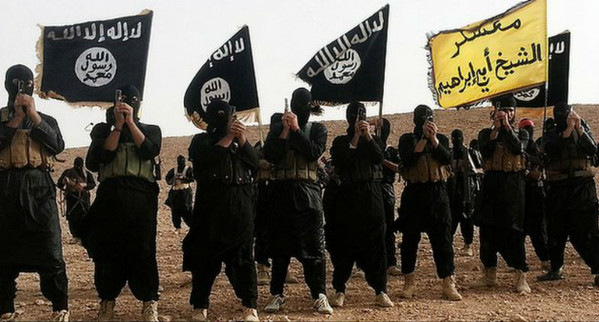The primary US goal in the Middle East is to restore stability. The power vacuum in the Middle East that emerged after the US withdrew from Iraq in 2011 has resulted in the development of ISIS, a group that splintered off from al Qaeda because it was considered too radical. ISIS conquered territory in Iraq and Syria by defeating the disorganized Iraqi army and making gains against the Assad regime in Syria. ISIS is the best-equipped and funded terrorist group in history. According to foreign policy expert Ian Bremmer, “[ISIS] demands US and international attention. It is ISIS that threatens to destabilize countries across the Middle East. It is raising alert levels everywhere by attracting recruits, imitators and allies around the world.” [ref]Ian Bremmer, “Obama Will Have to Rely on Ugly Allies to Fight Isis,” The Exchange, Sept. 17, 2015.[/ref] The vendetta is maintaining our limited military action against ISIS while understanding that participation in an anti-ISIS coalition may prove necessary.
Despite the threat ISIS poses to US national security and Middle Eastern stability, the US should not, under any circumstances, conduct a unilateral ground invasion in either Iraq or Syria. This will cost American blood and assets and result in a complicated occupation of parts of Iraq and Syria, which will be unpopular with the American people. Military action against ISIS should be limited for as long as this remains a viable option. Our current policy is to use airstrikes to curb ISIS’ expansion, while Special Forces is used for critical operations and for securing key areas. Simultaneously, Western Intelligence must infiltrate ISIS and undermine the organization from within. The goals of this strategy are explained by Henry Kissinger, who said, “We should set strategic objectives where we thwart any goal they set themselves, which we should be able to do by superior air power. And then, if we can enlist other countries, or other more local groups to do the ground fighting, we might actually destroy them.”[ref] Henry Kissinger, “Henry Kissinger’s Thoughts On The Islamic State, Ukraine And ‘World Order,'” NPR, Sept. 6, 2014. [/ref] Military force cannot destroy the threat of ISIS and related groups in the long-term. General Colin Powell explained, “ISIS is not just an enemy waiting to be defeated in Syria and in Iraq and elsewhere, it is a movement. It’s not something that is going to lend itself to immediate military power to take it out.”[ref] Jonah Bennett, “Colin Powell Doesn’t Think That Military Power Can Take Down ISIS,” Sept. 7, 2015. [/ref] Long-term victory over radical Islam requires the rejection of the ideology by Muslims, a process that requires the stabilization of the region and could take decades to achieve.
While a restrained strategy toward ISIS is preferred, there has been discussion of taking more aggressive steps to dismantle the organization, especially by the Republican Presidential candidates. If ground forces are deployed against ISIS, American political and military leaders would be wise to remember that the conditions President Eisenhower placed upon potential intervention in Indochina included Congressional approval and a coalition that contained our Western allies and countries from the region. [ref]Jean Edward Smith, Eisenhower: In War and Peace, New York: Random House, 2012.[/ref]
An anti-ISIS coalition could also include unconventional partners like Russia and Iran, two countries that are interested in destroying ISIS. Policymakers fear that Russian and Iranian participation could expand their influence in the region. But this is not a reason to reject collaboration with these powerful countries. The US has worked with unsavory allies in the past, including the Soviet Union during World War II and the Mujahideen in the Cold War. American and Russian cooperation would guarantee ISIS’ rapid defeat and limit the cost of American blood and assets.
Tactical victory over ISIS would not be difficult; an American-led coalition could easily crush ISIS’ thirty thousand militants. Figuring out what to do with the territory liberated from ISIS is more complicated. One possibility is to return the land back to Bagdad and Damascus, respectively. This would reverse ISIS’ conquests, but would return territory to two failed governments. It would not solve the ethnic and religious antagonisms that produced ISIS. Fundamentally changing the nature of the Iraqi and Syrian governments is the long-term solution, but this will be a costly and unpopular commitment that will face resistance from the international community and local populations. There will be no guarantee of success. Another solution is to allow the Sunni population that ISIS claims to represent to govern the region, but would require a legitimate sovereign government to assume responsibility. There is also the question of whether a pivotal shift in the credibility of the Iraqi government is possible, or if it would be more productive to divide the country based on ethnic and religious lines. One certainty must be that unlike in the 2003 invasion of Iraq, post war plans for the Middle East must be considered if a ground invasion against ISIS becomes unavoidable.
Take Action:
Take Action by signing this petition to stop ISIS




